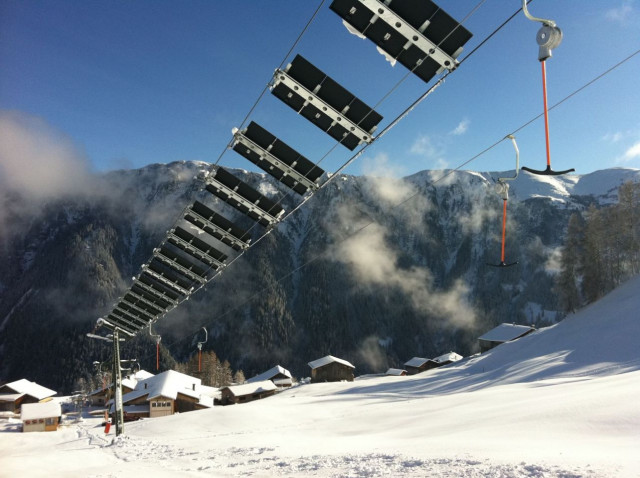Written by Amelina Wernli & Zeno Schaich, students of the University of Zurich
In numerous winter sports regions, there has been a significant decrease in snowfall due to the effects of climate change. Despite international efforts to mitigate climate change, it is probable that the annual average temperature in the Alpine region will rise by at least another 2°C by the end of the century. Moreover, alterations in precipitation patterns are of paramount significance, as multiple climate scenarios for Switzerland indicate a rise in winter precipitation occurring as rain in the Alpine region and an amplification of short-term, intense precipitation events (MeteoSchweiz, 2023). These variations in temperature and precipitation are anticipated to result in a substantial reduction in the snow cover below the 1500-meter mark above sea level (Bürki et al. 2000). As a consequence of the diminishing snow cover, ski resorts situated at lower altitudes are likely to disappear from the market over time, while only those regions equipped with ground-independent transportation systems enabling access to altitudes over 2000 m above sea level have truly promising prospects (Bürki et al. 2000). This could also benefit higher situated ski areas, due to a positive trend in demand (Menn & Putzig, 2014). Overall, winters with limited snowfall are expected to become the prevailing trend in the future, posing a substantial challenge to the winter sports and winter tourism sectors (MeteoSchweiz, 2023).
Figure 1: Solar-powered Ski lift in Tenna (Surselva Tourismus 2023).
TMany ski resorts are focusing on overcoming the lack of snow with the help of technical solutions, ignoring the fact that ski tourism also makes a significant contribution to climate change (Abbeg, 2009). Whether through travelling to the mountains, the construction of infrastructure, the operation of mountain railways or snowmaking systems. However, the largest amount of greenhouse gases is caused by electricity generation, with 52% of electricity being used for snow production (Menn & Putzig, 2014). Nevertheless, some ski resorts show that climate change can also be used as an opportunity for sustainable development. Ideas that have already been implemented include a solar-powered ski lift, avalanche barriers that also serve as solar power stations, snow-making facilities that can also be operated as hydroelectric power stations, an organized shuttle service and eco-friendly sport activities (Menn & Putzig, 2014).
Winter sports tourism is dependent on an intact natural environment and a functioning climate. Therefore, changes in the direction of a sustainable development are necessary. However, it is also clear that only when there is sufficient demand for sustainable products and services, the pressure to act is high enough for ski and winter sports to follow. This demand has to be increased by active sensitization and transparent information about the impact winter sports have on climate change. Only this way, a large proportion of tourists can be set off taking an interest on that topic and to prefer sustainably advanced offers (Menn & Putzig, 2014).
Literature:
Abbeg, Bruno (2009): Herausforderung Klimawandel. Swiss Equity Magazin, 52-53.
Bürki, Rolf; Abegg, Bruno & Elsasser, Hans (2000): Klimawandel und Schneesicherheit. Petermanns geographische Mitteilungen, 144, 34-41.
MeteoSchweiz (2023): Schneearme Winter: Eine Herausforderung für Wintersport und Wintertourismus, URL: https://www.meteoschweiz.admin.ch/ueber-uns/meteoschweiz-blog/de/2023/02/wintersport-und-klimawandel.html (Access: 07.11.2023).
Menn, Arne & Putzig, Fabian (2014): Die Klimapioniere – Nachhaltigkeitsinitiativen im Wintersport. In: Hildebrandt, Alexandre (ed.): CSR und Sportmanagement, Jenseits von Sieg und Niederlage: Sport als gesellschaftliche Aufgabe verstehen und umsetzen, Berlin, Heidelberg: Springer, 533-546.
Surselva Tourismus (2023): Solarskilift Tenna, URL: https://www.surselva.info/Winter/Skifahren-Snowboarden/Solarskillift-Tenna (Access: 21.11.2023).



